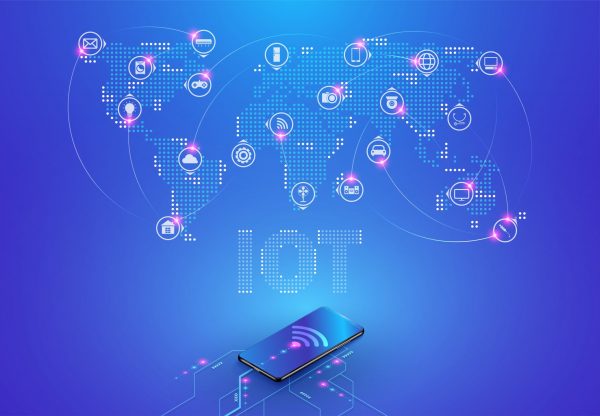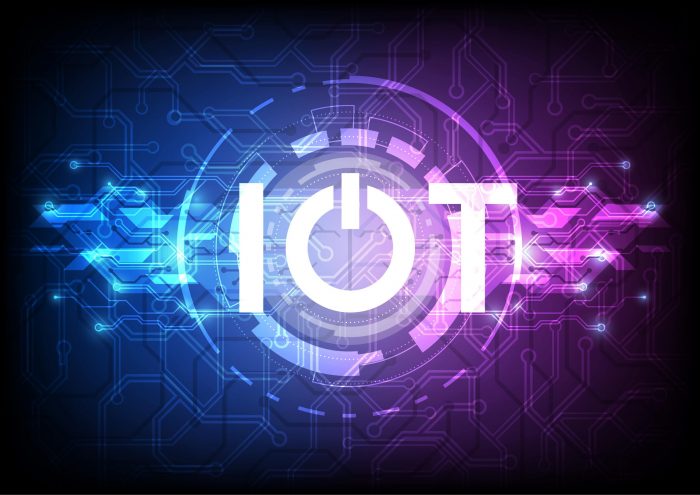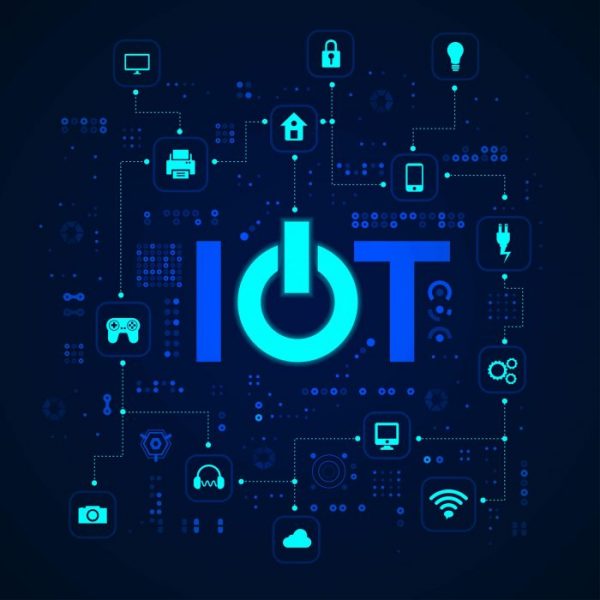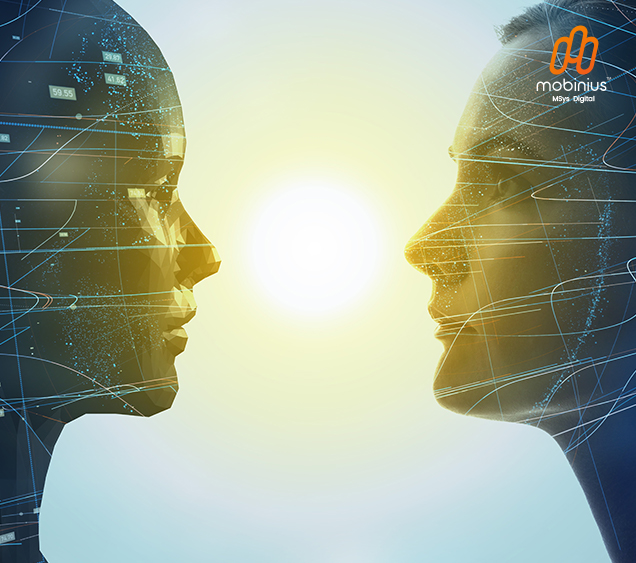Automation Trends and Top 5 IoT Predictions of 2021
Audio : Listen to This Blog.
From production automation to video conferencing with a doctor, modern technologies improve efficiency and productivity in all areas. Automation and the Internet of Things give impetus to developing 5G networks, new processors, and intellectual systems.
In turn, it speeds up the pace of our lives. Content consumption is increasing, and users demand the information here and now. It is true for online purchases as well. Store owners optimize their sites to make Magento images load faster, provide seamless navigation, and remove all barriers on the entire customer journey.
Where will technology take us? How will they develop in the 2020s? In this article, we’ll look at automation trends and the top five IoT predictions of 2021.
Table of Contents
Top Four Automation Predictions for 2021
1.Hyper-Automation
Among the technology tendencies of 2021, you can see hyper-automation. Hyper-automation creates a structure around chaos by combining various methods of automation. As a result, accurate end-to-end automated solutions are achieved.
Organizations are constantly automating parts of their business processes. However, hyper-automation allows for greater efficiency using artificial intelligence and machine learning.
Hyper-automation includes:
- Robotic process automation (RPA);
- Low-code application platforms (LCAP);
- Artificial intelligence (AI);
- Machine learning (ML);
- Virtual assistants.
Combining these technologies enables companies to design more efficient processes based on the ROI metrics. And machine learning ensures that operations will sharpen on their own, leading to even more significant improvements.
2.Orientation to Customers
When a company uses automation, it’s usually more for economic reasons. Cutting costs is definitely important. However, it is now apparent that automation should be done focusing on the client’s needs. Organizations embarking on digital transformation have a clearer understanding of why they are doing it.
They create a digital product that prioritizes the customer and improves the level of service. The business and the processes themselves need to ensure that the client receives the highest level of service throughout the entire sales funnel.
New technologies and IoT solutions increase the efficiency of various departments of the company. On the one hand, they work for business. On the other hand, they help to achieve a competitive advantage in customer interactions. Any automated process reduces the workload of employees and allows them to focus on quality customer assistance.
3.Growth of Intelligent Process Automation (IPA)
IPA automates operations, allowing you to solve some problems without human intervention. The system self-learns processes natural language and optimizes workflows to get the best results faster.
The first step to using IPA is RPA (robotic process automation). RPA takes over actions previously performed by people. It implies that a special program can carry them out faster and more efficiently.
Global spending on RPA services is expected to reach $12 billion in 2023, 2.4 times higher than in 2019. And the use of this technology will expand beyond IT spheres.
4.Internet of Behavior as Part of IoT Development
Internet of Behavior (IoB) is one of the leading technology trends of 2021. According to analysts, private and public sector companies will gradually implement technologies for collecting data about people from different sources.
Sources of data for IoB are:
- personal devices (smart bracelets, smartphones);
- implanted chips;
- digital technologies (face recognition);
- other sources (social networks).
IoB is a logical continuation of IoT solutions. But if the Internet of Things unites devices into one network, the Internet of Behavior collects data about people and their habits in a single database. Companies will be able to manage the digital footprints of their customers and make offers.
The main obstacle in developing these technologies may be the laws of countries that will restrict access to user information.
Main IoT Trends for 2021
1. Healthcare Getting Smarter
The most considerable growth in IoT adoption occurred in the healthcare sector. According to the Research and Markets report, IoT spending in the healthcare sector will reach $188.2 billion by 2025.
Obviously, the reason for this growth in 2020 was the coronavirus. Hospitals were overcrowded, and there was a demand for remote consultations. To meet the needs of healthcare, doctors began to apply digital therapies. To do this, they utilize:
- video conferencing;
- wearable medical devices
- and edge computing.
The medical staff monitors the condition of patients in real-time remotely and assists when needed. It allows the elderly and people with reduced mobility to receive care on time while remaining safe.
Intelligent technologies, cloud platforms, and connected surgical equipment also found their place in healthcare. Combining with AI, they enable real-time diagnostics and operations. Plus, it reduces costs.
2.IoT Solutions for Electricity
Climate change is on the agenda of governments, manufacturers, retailers, and consumers. As a result, energy producers are choosing renewable resources and new business models. Such changes require the growth of the measurement infrastructure.
Talking about the Internet of Things in a new energy ecosystem, we mean smart meters connected to LPWAN networks. Managers will have remote access to power facilities and meters. IoT will help them control their quality and read the figures.
IoT applications in the energy industry:
- collect data on the time and nature of consumption;
- analyze the processes of electricity circulation between suppliers and consumers;
- automatically optimize the use of resources;
- improve their delivery parameters.
3.IoT Transforms Retail
Many innovative IoT applications are being implemented in the retail industry today. They make it easier for the buyer to navigate the store by their everyday needs.
An IoT device can inform you when a product you are interested in is in stock or when a service is available. It will also notify you about the location of the nearest store where you can purchase this product or use the service.
Thus, everything that a particular consumer need is at the right time and in the right place. From now on, there is no need to drive, call and search, wasting time. The system itself analyzes the entire chain from demand to supply and forms a minimum action model. The buyer only has to decide, place an order via the Internet, pay for the purchase remotely, and get it in his hands in the most convenient way.
Retailers can save on electricity using IoT technologies. For example, smart sensors can control lighting. Sensors track the movement of the customer. If there are no customers in some area of the store, sensors dim the lights in these departments. When the visitor goes somewhere, the illumination rises there.
Also, these sensors can be integrated with a mobile interactive map so that customers can better navigate in the store. With a mobile application, the buyer will find products from the list, great deals, and discounts.
The primary trend in online retail is headless commerce. Such architecture will expand the touchpoints for interacting with the store to order goods directly from IoT solutions.
4.Industrial IoT (IIoT)
IIoT employs machine learning and analyzes big data from manufacturing equipment, products, and sensors. Specialists filter out and adequately interpret this massive array of unstructured data. Therefore, they need it to be presented in an understandable form.
For this, there are advanced analytical platforms on the market today. They are designed to collect, store, and analyze data on technological processes and events in real-time.
Manufacturers can use this data to:
- identify ineffective transactions;
- reduce costs;
- improve customer service.
How does the Technology Works?
Initially, sensors, actuators, controllers, and human-machine interfaces are installed on critical pieces of equipment. Then they collect information. This information allows the company to acquire objective and accurate data on the state of the enterprise.
For more information on how we can help you leverage your technologies, feel free to reach out to us here.
Contact us
The processed data is sent to all departments of the enterprise. Thanks to them, employees of different sections can establish communication and make informed decisions.
This information is in electronic form, allowing them to quickly reduce outdated paper documentation, speed up data processing, and accumulate expert knowledge.
The information obtained can be employed to:
- prevent unplanned downtime, equipment breakdowns;
- improve quality control;
- reduce supply chain management disruptions and unscheduled maintenance;
- ensure the efficiency of the enterprise and sustainable development.
5.Smart City
An entire IoT ecosystem makes life easier for city dwellers. It provides residents with mobility, safety, health, and efficiency benefits. According to a study by Juniper Research, smart city technology can free up to 15 business days a year.
For example, Intelligent Transport Systems (ITS) are used for:
- regulation of traffic lights;
- road information boards and signs;
- car navigation;
- license plate recognition;
- integration of information flows.
All of these components manage road traffic and effectively deal with traffic congestion. Smart parking lots will send availability alerts to drivers directly to their smartphones.
We will also see the development of self-driving cars and Mobility as a Service (MaaS). Such an intelligent transportation system consists of two components:
- an internet platform working with transport service providers;
- an online platform that manages route creation, reservations, payments, and pricing for customers.
This service integrates city transport into a single service platform to make personalized offers. It helps vehicle owners and passengers find each other according to the point of departure, route, and destination.
Conclusion
We will live in a single ecosystem of interconnected IoT platforms in the future. Technologies will be able to automate human labor and recognize breakdowns in production in time. With the help of IoT solutions, we will build smart cities, increasing our mobility.
However, the growth of technology will be held back by people’s concerns about data privacy and the risk of total control. Therefore, IoT companies should prioritize maximum security from cyber threats.



